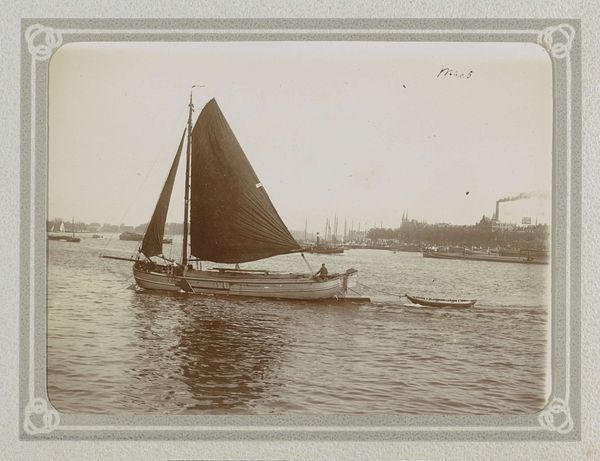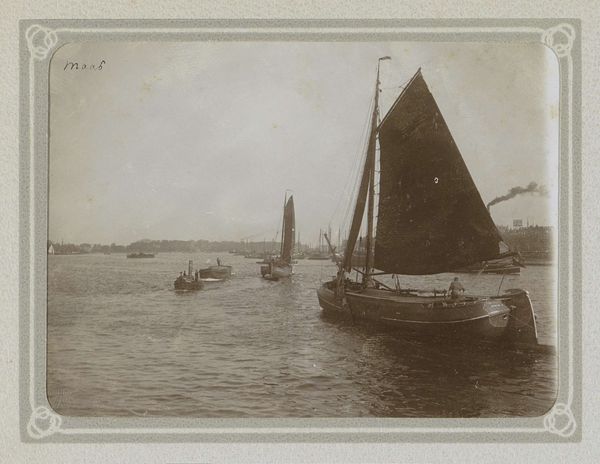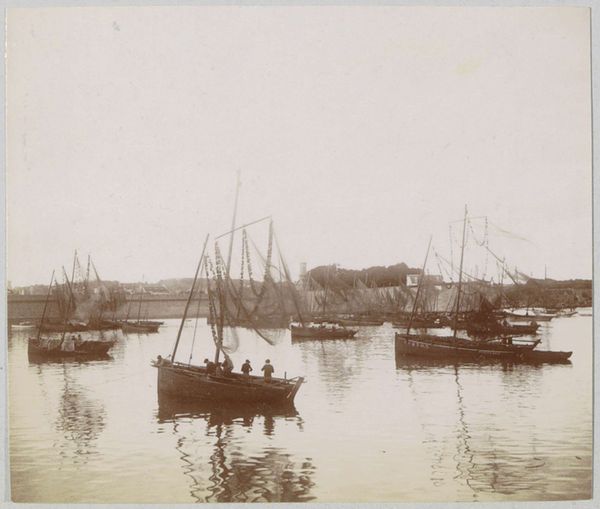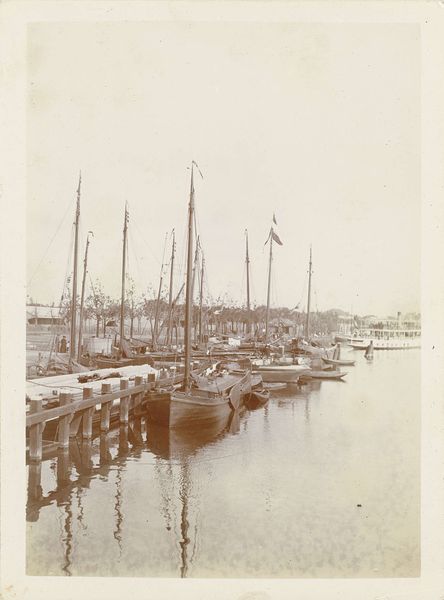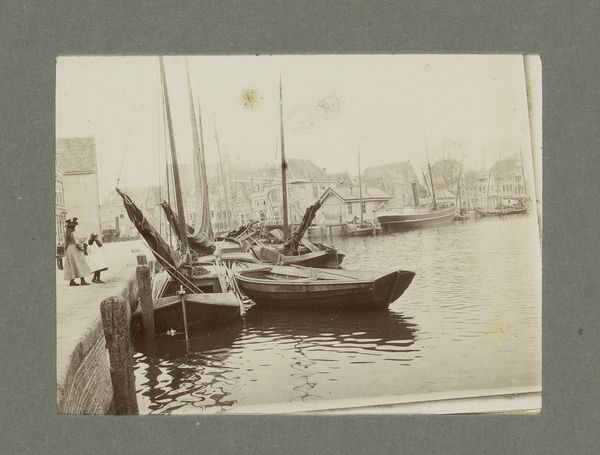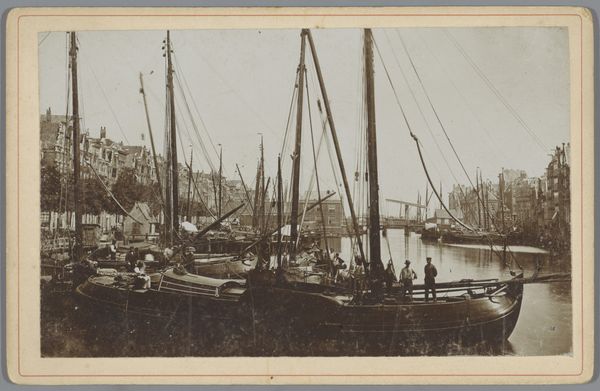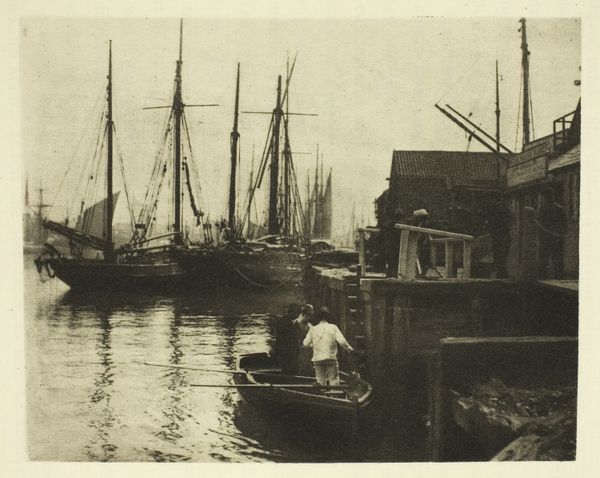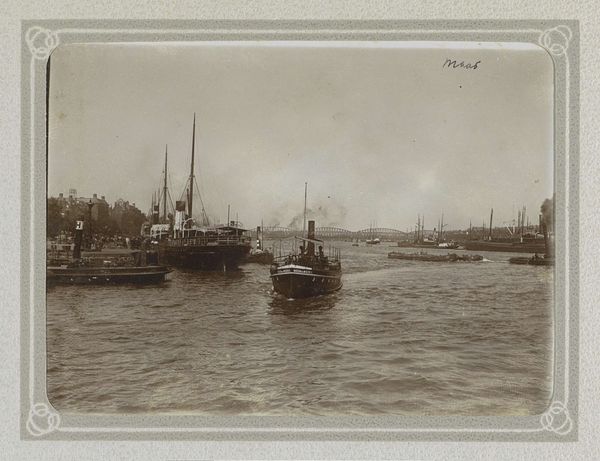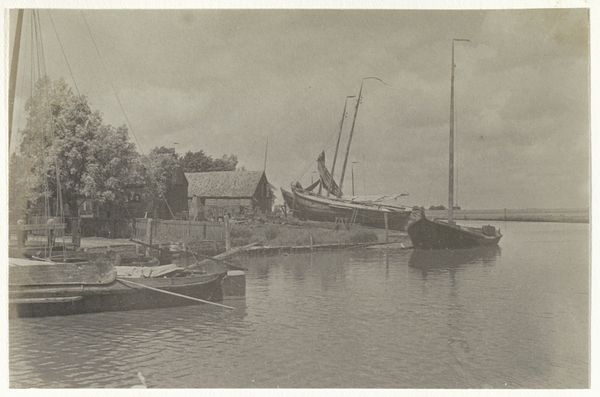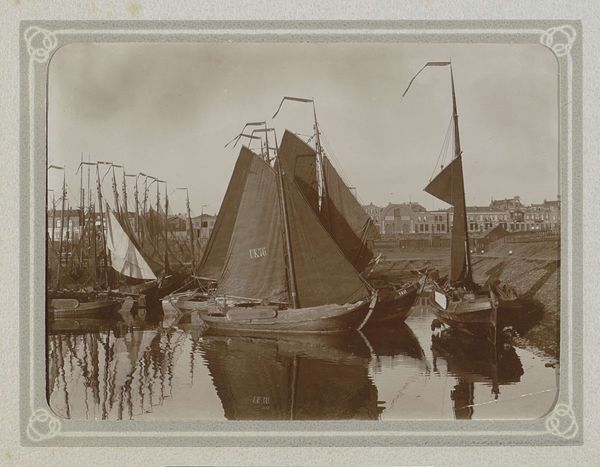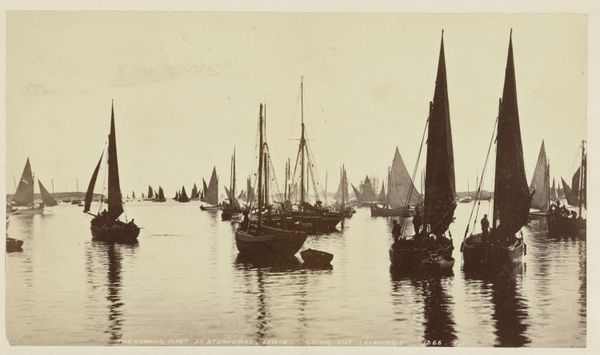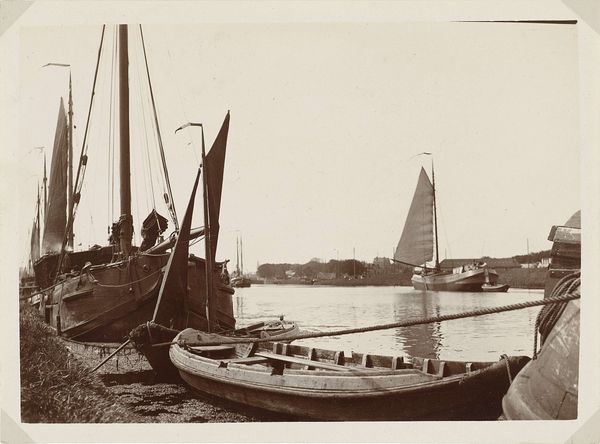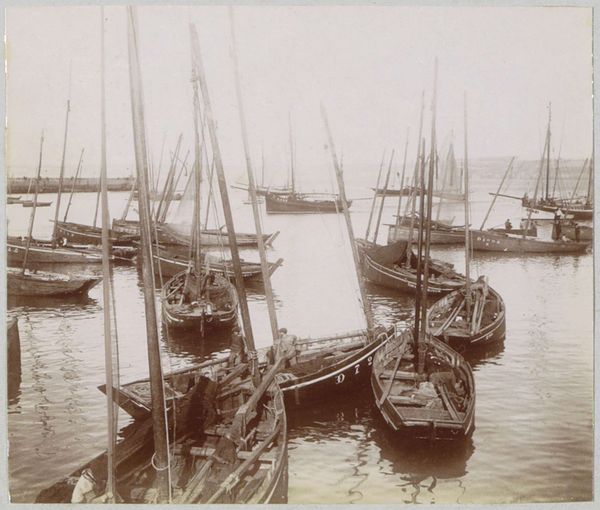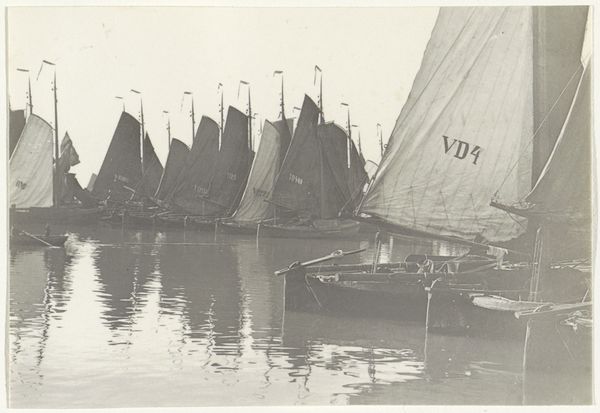
photography, gelatin-silver-print
#
dutch-golden-age
#
sculpture
#
landscape
#
white palette
#
historic architecture
#
photography
#
gelatin-silver-print
#
cityscape
#
watercolor
#
statue
Dimensions: height 81 mm, width 110 mm
Copyright: Rijks Museum: Open Domain
Editor: So, this is Folkert Idzes de Jong’s “Boten op een water, mogelijk de Amstel in Amsterdam,” a gelatin silver print from around 1905-1907. I’m struck by how it captures a bustling scene yet feels almost dreamlike due to the muted tones. How would you interpret this work in its historical context? Curator: Considering the period, early photography was rapidly becoming accessible. This print, with its focus on the everyday activity of boats on the Amstel, speaks to the democratization of image-making. De Jong isn't just depicting a scene; he's participating in a broader project of documenting Dutch life as it evolved. Look at how the light softens the architectural details. What might that suggest about the changing perceptions of the urban landscape at the time? Editor: Maybe it shows a softening view of industrialization or a desire to romanticize urban life. But the boats also show how dependent Amsterdam was on waterways at this time. Do you think that romanticizing it was necessarily positive? Curator: That's a key point. While the picturesque quality softens the grit of urban life, it also subtly obscures the economic realities tied to the port and waterways. De Jong’s photograph isn’t purely objective; it participates in shaping a narrative about Amsterdam’s identity in the early 20th century. How do you think this image would be received differently now versus when it was made? Editor: I think today, it would prompt reflection on the environment and perhaps spark discussions about urban development. I never thought a photograph could speak volumes about a society. Curator: Indeed, the apparent simplicity often masks complex historical and social narratives. Examining this image gives us clues about not only art history but about Dutch society and its values at the turn of the century.
Comments
No comments
Be the first to comment and join the conversation on the ultimate creative platform.
